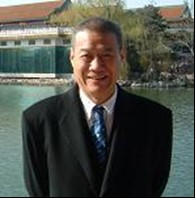Content from the Brookings-Tsinghua Public Policy Center is now archived. Since October 1, 2020, Brookings has maintained a limited partnership with Tsinghua University School of Public Policy and Management that is intended to facilitate jointly organized dialogues, meetings, and/or events.
The Brookings-Tsinghua Center hosted a roundtable on September 6, 2007 titled “China’s Economic Policies” featuring top scholars and experts from U.S. International Trade Commission (USITC). This topic is a point of interest in U.S.-China relations. Participants in that roundtable will be featured in a joint research working paper series between USITC, school of public policy and management at Tsinghua University and Institute of International Economics at NDRC of China.
EXECUTIVE SUMMARY
This study provides an objective overview of U.S.-China trade in advanced technology products (ATP). It examines the definitions and classification methods of ATP in the United States and China, compares available ATP lists, and investigates some of the pros and cons of both countries’ current systems using historical data. It also illustrates a method to reconcile U.S.-China ATP trade data that combines the strengths of both countries’ trade statistics. Finally, it presents preliminary explanations for U.S.-China ATP trade patterns from 1996 to 2006, based on one set of reconciled ATP trade statistics.
Major findings from the study are:
- ATP classifications in the two countries, while similar in a number of ways, appear to have been created to serve different purposes. Some Chinese classifications appear to be used to help inform and manage its broad industrial development strategy and often extend to products beyond those considered advanced technology products in the United States. The U.S. ATP classification are mainly for statistical monitoring purposes and do not appear to be tied to specific policy goals.
- The ATP-producing industries are relatively stable, while the ATP product list changes year by year, with dramatic changes taking place when a revision of the HS codes occurs.
- ATP statistics from numerous sources consistently show that the U.S. trade deficit in ATP with the world grew rapidly in recent years, with China as one of the largest contributors.
- The dramatically increasing surplus of China in ATP trade since its WTO accession is concentrated mostly in information and communication technology, while the United States still enjoys sizeable surpluses in electronics and aerospace technology.
- The adjustment of re-exports through Hong Kong has only a modest impact on the discrepancies in U.S.-China ATP trade statistics, which is similar to the findings of Ferrantino and Wang (2007) in U.S.-China general merchandise trade. However, when we make adjustments for differences in classification definitions, and largely purge the Chinese data of “new” products, we get a clearer picture of U.S.-China trade in ATP products.
- More than 90 percent of the rapidly expanding ATP exports from China to the United States is processing trade, which is closely related to foreign direct investment (FDI) and largely carried out by foreign firms. This is in contrast to non-ATP trade, where most of the growth in trade since China WTO accession has been carried out by private Chinese firms, not foreign firms.
- Various special economic zones and areas have largely hosted the rapid expansion of Chinese ATP exports.
- The emergence of China as a major supplier to the U.S. advanced technology products market results from the combination of the fragmentation of global production, China’s comparative advantages, and Chinese Government preference policies to processing trade and foreign invested enterprises.
There appears to remain a considerable technological gap between Chinese ATP exports and Chinese imports from the United States. Chinese ATP imports from the United States were dominated by large-scale, sophisticated, high-valued equipment and devices, while Chinese ATP exports to the United States were still mainly small-scale products or components in the low-end of the ATP value-added chain.




